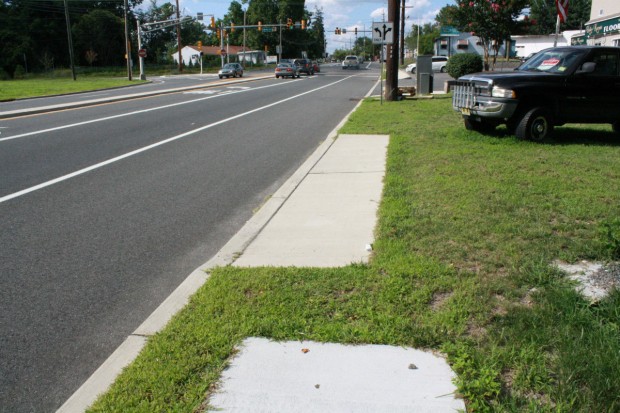Filling in the Gaps
Assessing the implementation of NJDOT’s Complete Streets Policy
Drive down most roads in New Jersey and you’ll likely see them: sidewalks that stop and start intermittently, strung together by worn-out grass. It’s a common sight across the state, and the result of road design policies geared solely towards cars, with little or no consideration for other users, even though an estimated one-third of New Jersey residents don’t drive. The resulting landscape is inhospitable and dangerous for non-drivers; between 2000 and 2009, there were 1,514 pedestrian fatalities in New Jersey.
In an attempt to address pedestrian safety and make roads more accommodating, the NJDOT adopted a Complete Streets policy in 2009, which states that the department will design new roads and retrofit old ones to accommodate all users, not just drivers. Now, some 20 months later, New Jersey Future has taken a look at how the department has implemented the policy. Given the multi-year design process for roadways, it is too early to judge the agency’s effort in full. Still, the analysis, which involved interviewing NJDOT officials and inspecting a number of recently completed projects across the state, found that the department has taken a number of positive steps towards implementing Complete Streets. It also found some significant missed opportunities.
Download report:
Filling in the Gaps (PDF)



















